Mesa Verde National Park is located in southwestern Colorado
The park protects more than 5,000 sites, including mesatop pueblos, iconic cliff dwellings, and artifacts of people the Colorado Plateau’s earliest residents.
Park rangers lead guided tours through the Ancestral Puebloan homes, where you can hear stories and learn about Native cultures. Stop by the new visitor center at the foot of the mesa for orientation and to view exhibits about the 26 tribes who still have ties to Mesa Verde. A few hiking trails near the park campground highlight the nearby mesas, valleys, and canyons.
Visiting Mesa Verde National Park
Located in southwestern Colorado, Mesa Verde National Park is a perfect complement to any Southwest road trip. Step back in time as you see the dwellings and structures Ancestral Puebloans called home for nearly 700 years (600 to 1300 AD).
The park entrance is at the northern foot of Mesa Verde, about 35 miles west of Durango. The visitor center is located at the entrance, 45 minutes and 22 twisting and turning miles away from the concentration of cliff dwellings, including Cliff Palace and others. Be sure to stop at the visitor center to learn about the variety of programs and tours offered. Distances from the entrance include: Morefield Campground, 4 miles; Far View Lodge, 15 miles; and Chapin Mesa Archaeological Museum, 22 miles.
Trails: Knife Edge Trail | Point Lookout Trail | Petroglyph Point Trail | Spruce Canyon Trail
Campground: Morefield Campground
Things to do in the park
Chapin Mesa Museum
The Chapin Mesa Museum displays fine examples of weavings, baskets, pottery, tools, and other implements made by the early residents, adding a human dimension to the story that is missing from the grand architecture of the cliff dwellings.
A 25-minute video about Mesa Verde is shown on the hour and half-hour in an auditorium that is also worth seeing, with a ceiling constructed of vigas (peeled logs used as beams) and latillas (small peeled sticks between the beams), tin chandeliers, a carved railing on the balcony, and Native American murals.
Spruce Tree House (self-guided)
Located near the Chapin Mesa Museum, a trail leads down into Spruce Tree House, usually one of the first cliff dwellings visitors see. Constructed between A.D. 1211 and 1278, Spruce Tree House has about 130 rooms where 60 to 80 people lived. A 0.5-mile paved path descends to the site, which you can enter, and where a ranger is available to answer questions. Tickets are not required, but be sure to check for the hours the site is open. For more modern visitor amenities, the Spruce Tree Terrace Café is located near the museum on the other side of the road.
Cliff Palace (tickets required/tour only)
To visit Cliff Palace, the largest cliff dwelling in North America, you must purchase a ticket for a 1-hour tour with a park ranger. Meet at the trailhead at the scheduled time, and then descend the quarter-mile trail about 100 feet into the canyon using uneven rock steps. You will also need to be able to climb four ladders during the tour. Amazingly, most of Cliff Palace was constructed in 20 years, from A.D. 1260 to 1280! The builders shaped and dressed blocks of Cliff House Sandstone with quartzite hammer stones. Cliff Palace has about 150 rooms, 75 open public spaces, and 21 kivas, circular underground rooms used for ceremonial purposes. Only 25 rooms include hearths, a key characteristic of rooms that were lived in. With so few residential rooms, archaeologists estimate that only 100 to 120 people lived in Cliff Palace.
Balcony House (tickets required/tour only)
Balcony House, considered the most adventurous cliff dwelling tour, requires that visitors be able to climb up a 32-foot ladder to get into the alcove where Balcony House was built, crawl through an 18-inch wide and 12-foot-long tunnel, climb a 60-foot cliff with carved steps, and go up two, 10-foot ladders to exit the site. Balcony House, which has 38 rooms and two kivas, is named for the well-preserved balconies between the first and second floor rooms facing the North Plaza. Another unusual feature of the site is a spring at the back of the alcove that provided water for the residents. Tickets for the 1-hour tour must be purchased to visit Balcony House. You can view Balcony House from across the canyon by hiking to the end of the 1.2-mile Soda Canyon Overlook trail.
Long House (tickets required/tour only)
Located at the end of the 12-mile Wetherill Mesa Road (open during the summer only), Long House may be visited by joining a ranger-led tour (1.5 hours). Purchase tickets for a specific tour before you drive to the end of the Wetherill Road, where you will take a tram to the trailhead. Long House, built within a 298-foot long alcove, has about 150 rooms and 21 kivas. A large plaza in the center of the site, with a raised firebox and benches, has led some archaeologists to speculate that Long House may have been a gathering place for community events.
Step House (self-guided)
The 0.8-mile, self-guided paved trail to Step House begins near the information kiosk at the end of the Wetherill Mesa Road. A brochure is available which explains the unique features of Step House. Between A.D. 616 and 627, early residents of the area called “Basketmakers” built several partially subterranean homes called pithouses under an alcove. About 600 years later (ca. A.D. 1226), the Ancestral Puebloans moved back down into the alcove and built the small, two-story cliff dwelling on the same site, home for 30 to 40 residents. Step House is a great place to see the differences between an earlier and later group of inhabitants.
Mesa Top Sites
While Mesa Verde is known for its spectacular cliff dwellings, there are thousands of archaeological sites scattered across the mesa tops that give a fuller picture of the entire time people lived here. There are several sites to see along the Mesa Top Loop Drive south of the Chapin Mesa visitor area, including pithouses dating from A.D. 600, to pueblos built from A.D. 900 to 1100 of double-course masonry, to the mysterious Sun Temple built about A.D. 1250.
The Far View farming community, comprised of five excavated and stabilized structures and a reservoir called Mummy Lake, is located along the entrance road between Far View Lodge and the Chapin Mesa visitor area. A self-guided trail provides access to the sites.
Badger House Community at the end of the Wetherill Mesa Road is a mesatop site that can be visited by either taking a trail from the information kiosk or by taking the tram and walking a 0.6-mile, self-guided trail.
General Location Southwest Colorado
Closest Towns Durango, Cortez, and Mancos, Colorado
Cost Vehicle Permit: $30 (check the website below for current information)
Managed By National Park Service
Pets Pets are not allowed on trails, in archaeological sites, or buildings. Leashed pets may be walked along paved roads, in parking lots, and at the campground.
More Info NPS website
Adventure awaits
Sign up to get monthly hikes in your inbox for a year.
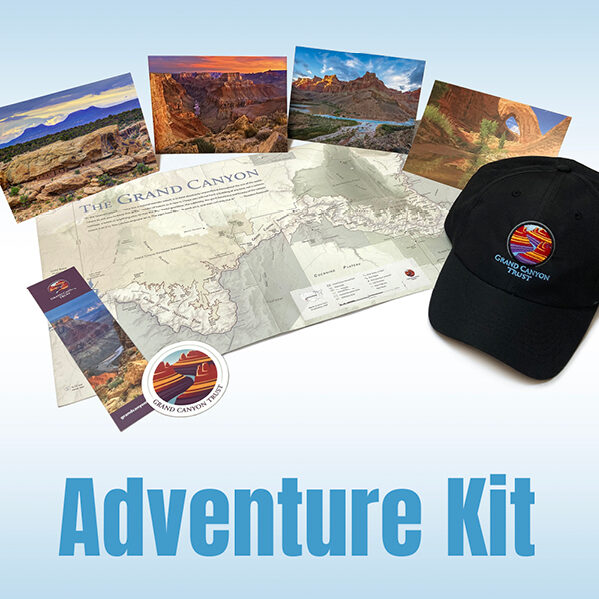
Special membership offer
Join the Grand Canyon Trust today to receive your adventure kit:
- $25 donation: a Grand Canyon map, The Advocate magazine subscription, bookmark, and sticker
- $75 donation: everything above plus four stunning note cards
- $100 donation: all the benefits of the $75 level, plus a Grand Canyon Trust hat
Related Hikes by Destination
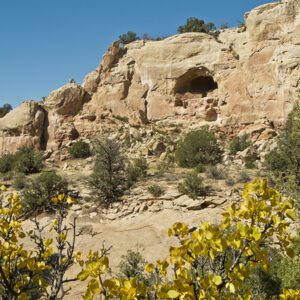
Distance: 6.5 miles (10.5 km)
Difficulty: Moderate
Type: Loop hike
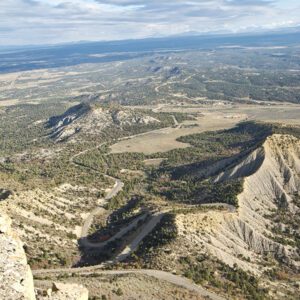
Distance: 2.2 miles (3.5 km)
Difficulty: Moderate
Type: Out and back
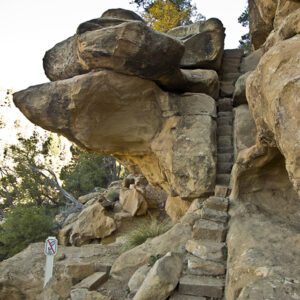
Distance: 2.4 miles (3.8 km)
Difficulty: Moderate
Type: Loop hike
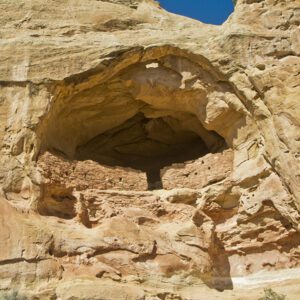
State: Colorado
Nearest Town: Cortez, Colorado

